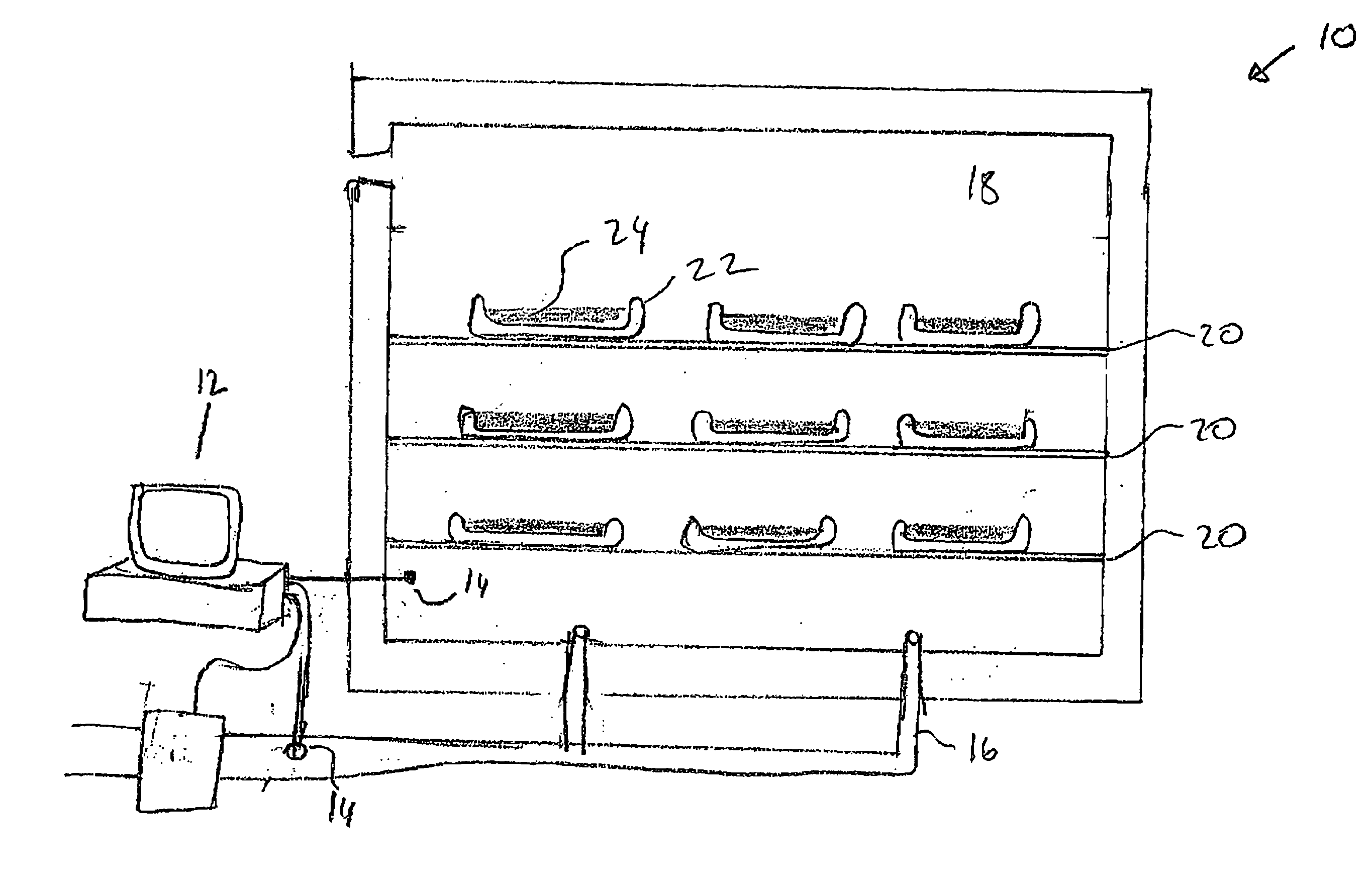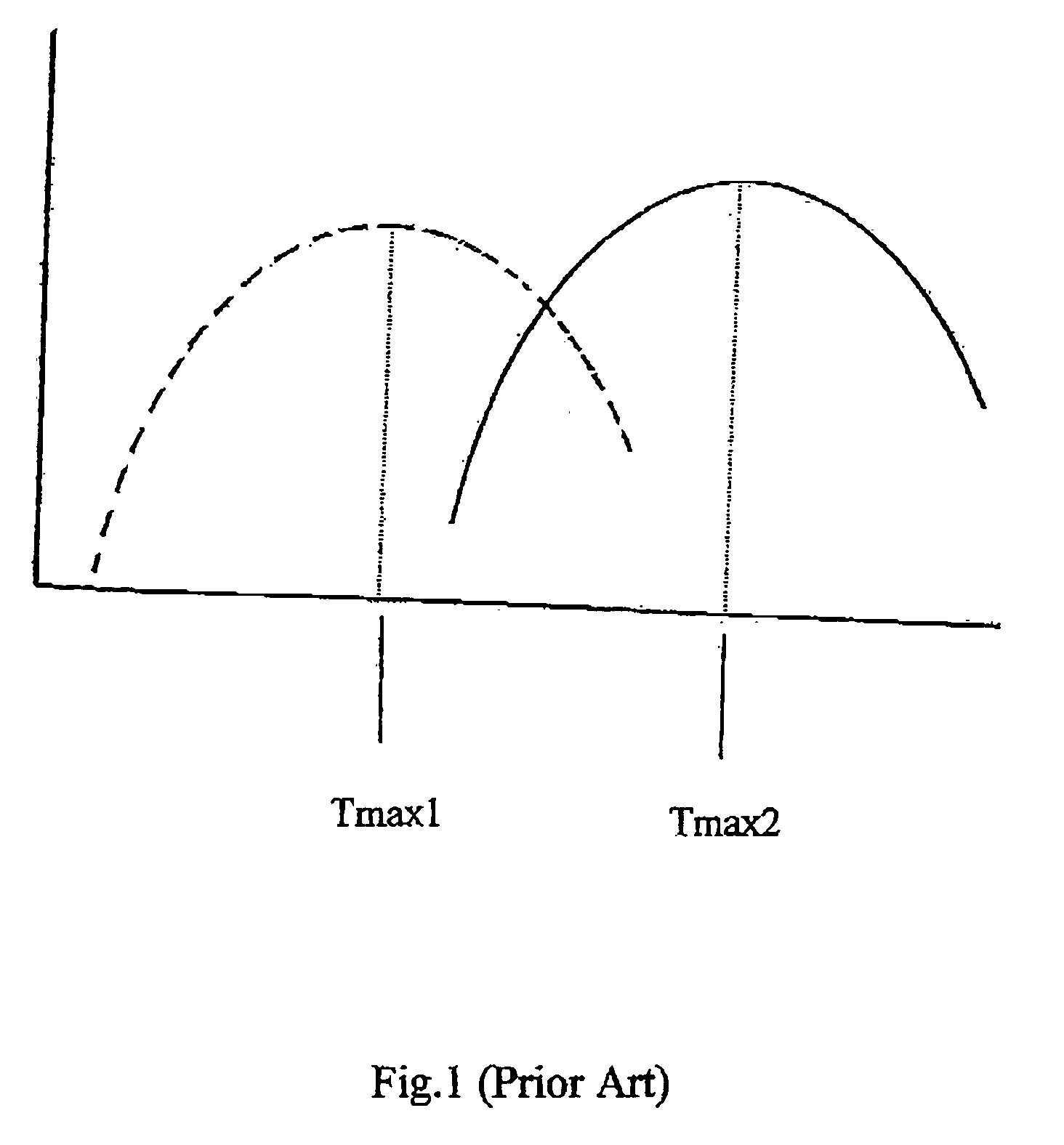Poly-crystalline compositions
a technology of polycrystalline compositions and compositions, applied in the field of polycrystalline compositions, can solve the problems of accumulating huge quantities of coal ash waste, major environmental challenges, and difficult to disperse the large amount of coal ash formed,
- Summary
- Abstract
- Description
- Claims
- Application Information
AI Technical Summary
Benefits of technology
Problems solved by technology
Method used
Image
Examples
example 1
Production of Anorthite Glass Ceramic on the Basis of Fly Coal Ash
[0126] The following process was used to produce an anorthite glass ceramic product: Anorthite (which is composed mainly of CaO* A2O3 *2 SiO2) is related to a class of silicate of the frame structure type. The density of crystals is (2.74-2.76)*103 kg m−3; the melting temperature is 1550° C.; TCLE is 40*10−7 ° C.−1; the dielectric constant is 6.9 and the hardness (Mohs scale) is 6.0-6.5.
[0127] Ashes I and II were used (see Table 1). The stochiometric mass ratio of the oxides CaO, Al2O3 and SiO2 in the anorthite is 1.0:1.8:2.1 respectively. The resulting stochiometry of the product made with ash I was found to be 1.0:4.7:6.5 and with ash II 1.0:2.9:4.1, respectively. Thus, in order to improve the composition, calcium carbonate (CaCO3) and technical alumina (Al2O3) were added. The catalysts of crystallization that were used in this process were TiO2, Cr2O3, P2O5, followed by administration phosphoric acid potassium. T...
example 2
Production of Cordierite Glass Ceramic on the Basis of Fly Coal Ash
[0130] The following process was used to produce a cordierite glass ceramic on the basis of fly coal ash. Cordierite (which is composed mainly of 2MgO*2Al2O3*5SiO2) relates to a class silicates of circular structure type. The crystals density is 2.53*103 kg m−3, the melting temperature is 1470° C., TCLE is 26*10−7 ° C.−1, the dielectric constant is 7 and the hardness on the Mohs scale is 7-7.5.
[0131] Ashes I and II (see Table 1) were used. The stoichiometric mass ratio of oxides MgO:Al2O3:SiO2 in cordierite is 1.0:2.6:3.8. The ratio of Al2O3:SiO2 in cordierite is 1.0:1.5. The ratio of Al2O3:SiO2 in the ashes I and II approximately corresponds to cordierite without MgO. Thus, for improving the composition, magnesium salts were added. The following catalysts of crystallization were used either separately or in combinations: titanium dioxide, chromium oxide and zinc oxide. The resulting composition was (mass %): [0132...
example 3
Production of Wollasonite Glass Ceramic on the Basis of Fly Coal Ash
[0134] The following process was performed for obtaining of wollastonite glass ceramic on the basis of fly coal ash.
[0135] Wollastonite CaO*SiO2 relates to the silicate class of chain type. The crystals density is 2-928*103 kg m−3; the melt temperature is 1540° C.; TCLE 94*10−7 ° C.−1; the dielectric constant is 6.2; and the hardness according to Mohs scale is 4.0-4.5.
[0136] Ashes I and II (see Table 1) have been used. The stoichiometric mass ratio of oxides CaO:SiO2 in the wollastonite is 1.0:1.1. The stoichiometric mass ratio of the oxides CaO:SiO2 Obtained with ash I was 1.0:6.5; and in ash II 1.0:4.1, respectively. Thus, for improving the composition calcium salts were added. The catalysts of crystallization that were used either separately or in combination were titanium dioxide, chromium oxide and zinc oxide. The resulting composition was (mass %): SiO2 38.0-43.0; Al2O3 20.0-27.0; Fe2O3 1.3-3.2; CaO 28.0-34...
PUM
| Property | Measurement | Unit |
|---|---|---|
| temperature | aaaaa | aaaaa |
| temperature | aaaaa | aaaaa |
| time | aaaaa | aaaaa |
Abstract
Description
Claims
Application Information
 Login to View More
Login to View More - R&D
- Intellectual Property
- Life Sciences
- Materials
- Tech Scout
- Unparalleled Data Quality
- Higher Quality Content
- 60% Fewer Hallucinations
Browse by: Latest US Patents, China's latest patents, Technical Efficacy Thesaurus, Application Domain, Technology Topic, Popular Technical Reports.
© 2025 PatSnap. All rights reserved.Legal|Privacy policy|Modern Slavery Act Transparency Statement|Sitemap|About US| Contact US: help@patsnap.com



